Rosersberg Palace is a royal palace in Sigtuna, north of Stockholm. This castle is one of the eleven royal castles in Sweden and was home to Karl XIV Johan Bernadotte and his wife Desideria. Today the castle is a nice place to visit.
Table of contents
Rosersberg Castle
Rosersberg Castle offers a lot of Swedish history and, when guided tours are given of the castle's halls, you can travel right into the middle of the 19th century. Right now, you have to make do with viewing the castle from the outside and walking in the castle park, but that's not bad either.
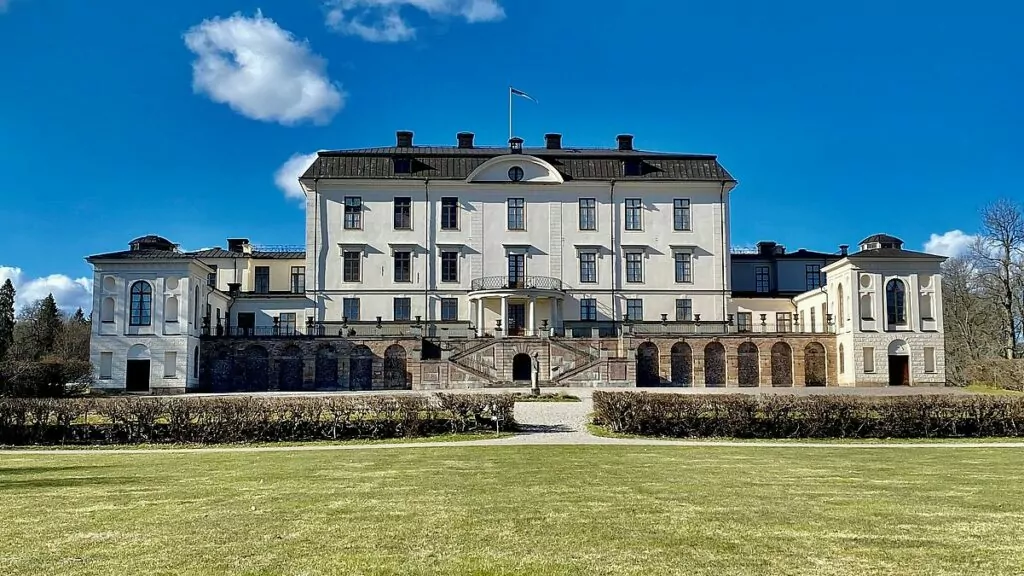
Rosersberg Castle is located in Sigtuna, just four kilometres north of Stockholm.
The castle where time stood still
Construction of Rosersberg Castle began in 1634 and was completed four years later. Since then, the castle has been expanded and modernised several times, but in the middle of the 19th century, it can be said that time stopped.
Charles XIV Johan and his wife Desideria were granted the right of disposal and spent a lot of time here in the summers. When Charles XIV Johan died, Desideria remained here as a widow. These were the last royals to live here, and after that everything stayed as it was. The rooms remain almost exactly as they were then.
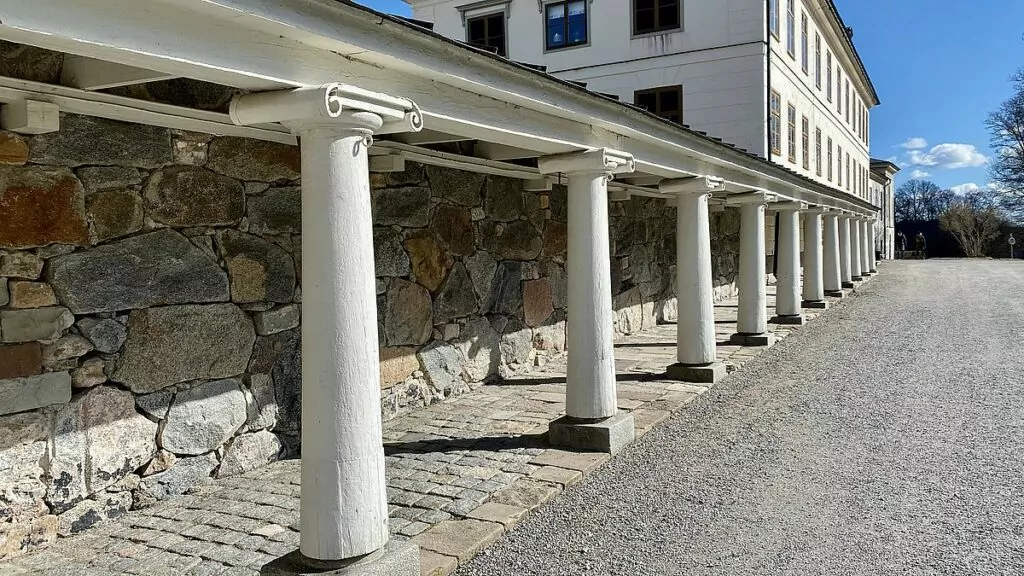
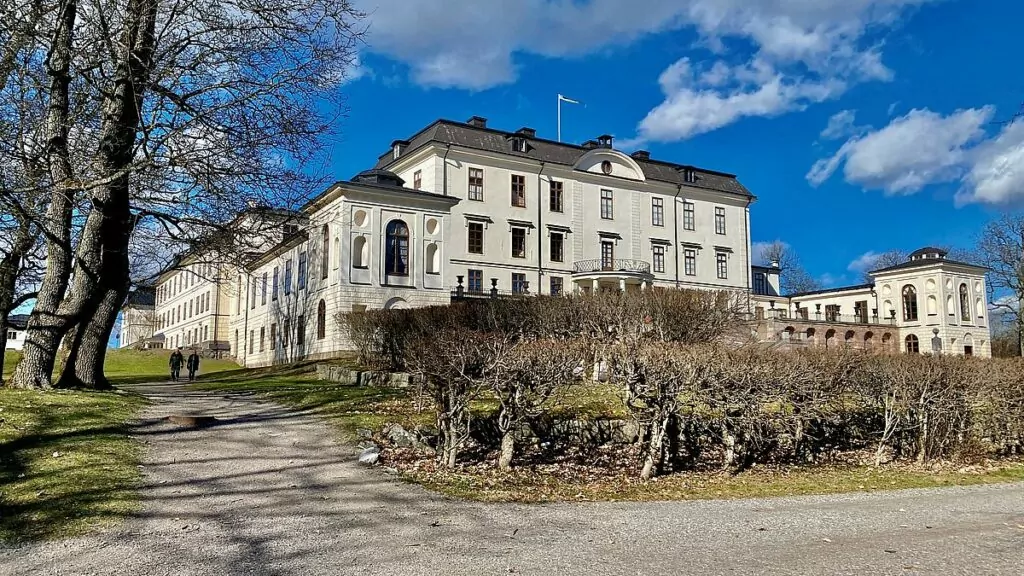
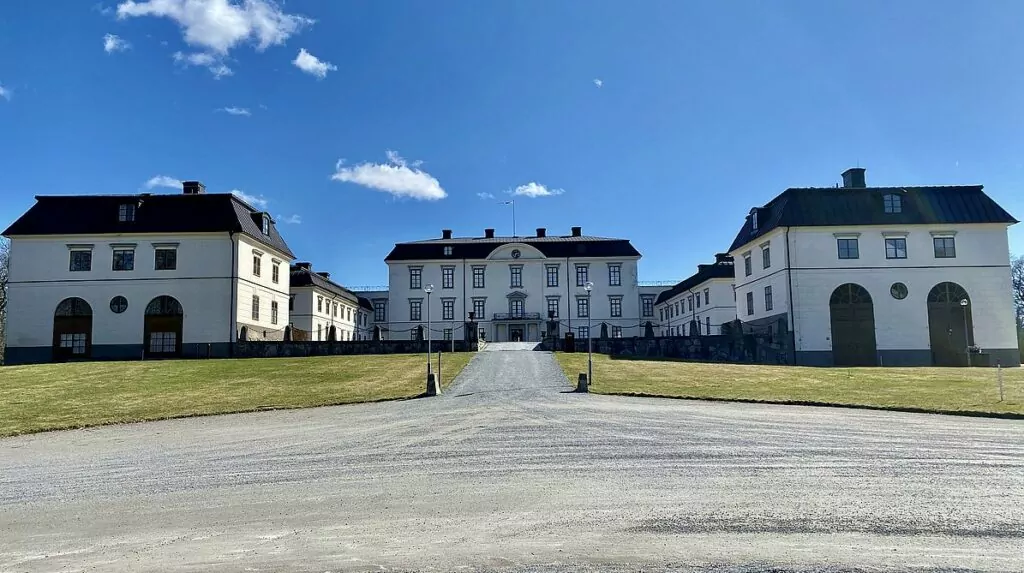
Visiting Rosersberg Castle
These are different times, and the Royal Palaces are closed internally due to the pandemic. Normally, guided tours are given, both for individual visitors and for groups. Rosersbergs Slottshotell also runs a hotel, conference, party & wedding and castle café. Under normal circumstances, you can drop in for a castle coffee.
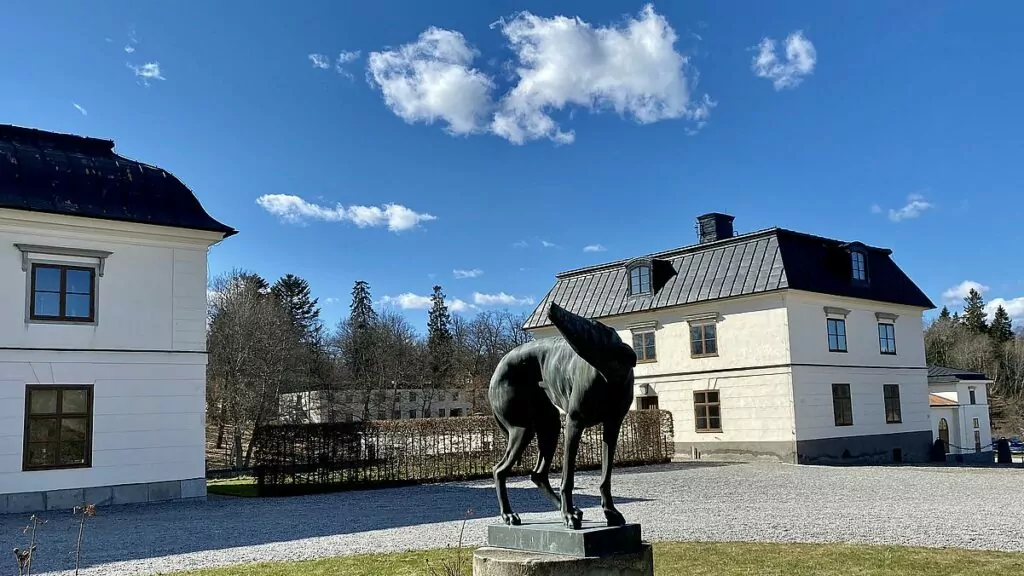
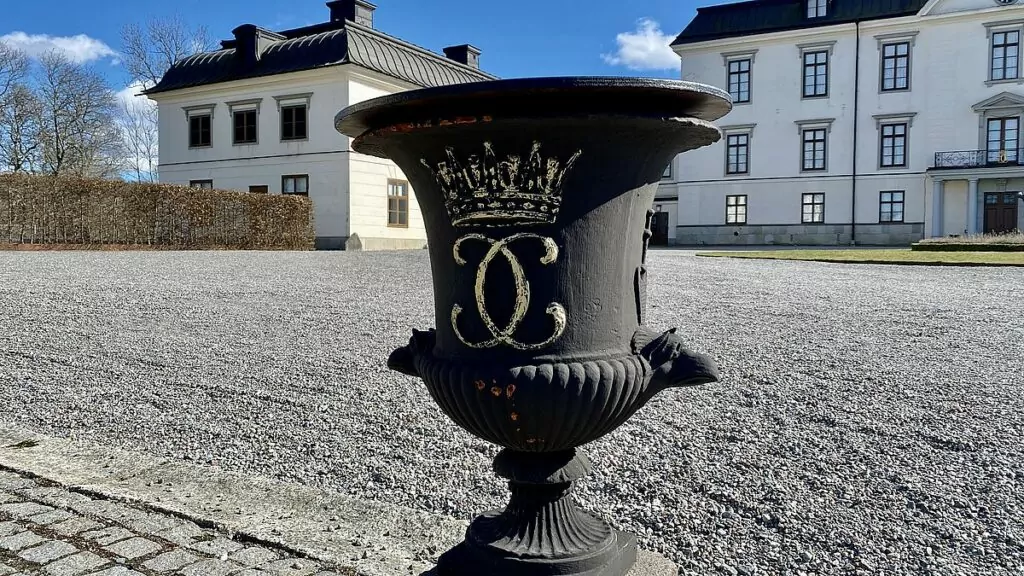
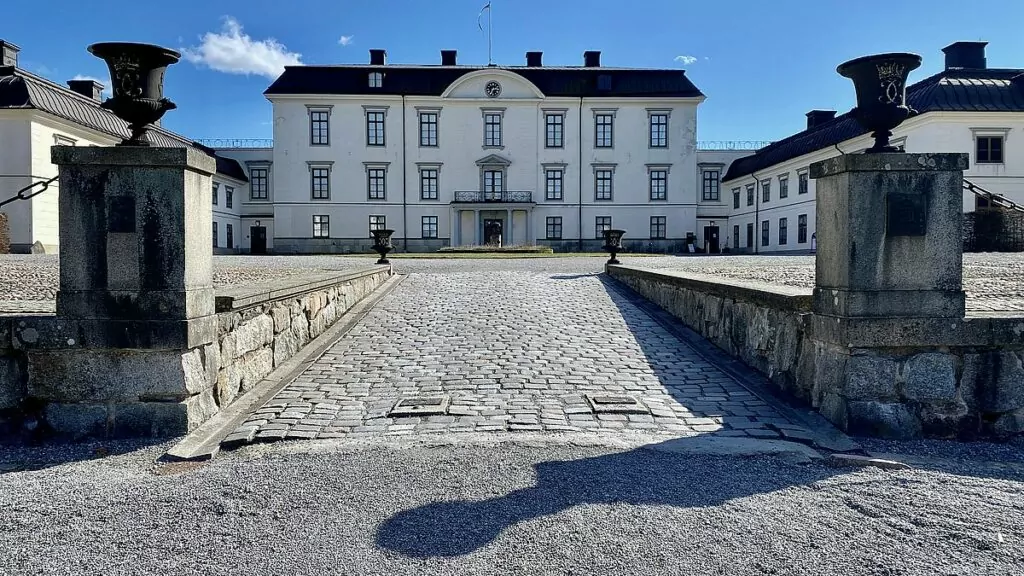
Whatever the situation, the castle park is always open. When we were here, many people were also enjoying the sun at the back of the castle!
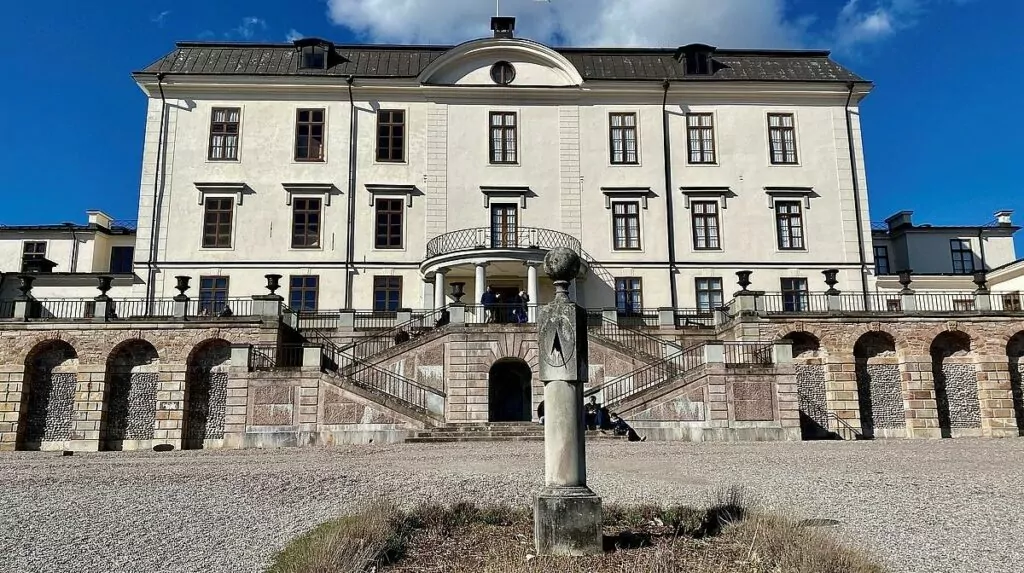
The palace halls - a well-preserved time bubble
Normally, guided tours are arranged in the castle's halls, but due to the pandemic, all such tours are cancelled at the moment. We couldn't see the inside of the castle, but since we (and maybe you) are curious, we'll show you some press photos.
Rosersberg Palace showcases a royal environment that has remained largely untouched since the 19th century. Stepping in here is therefore like stepping straight into a time bubble. Here you can see beautiful halls and also the culturally important castle chapel, which is also open for weddings and baptisms. The last royals to live here were Charles XIV Johan and Queen Desideria, the first Bernadottes. This is what their home looked like!
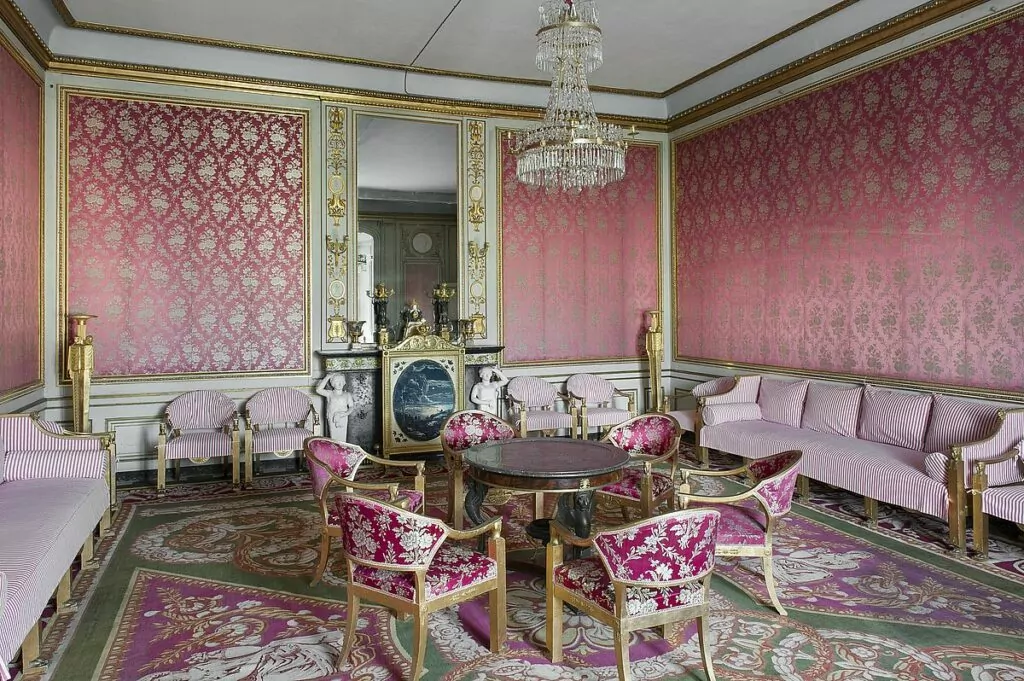
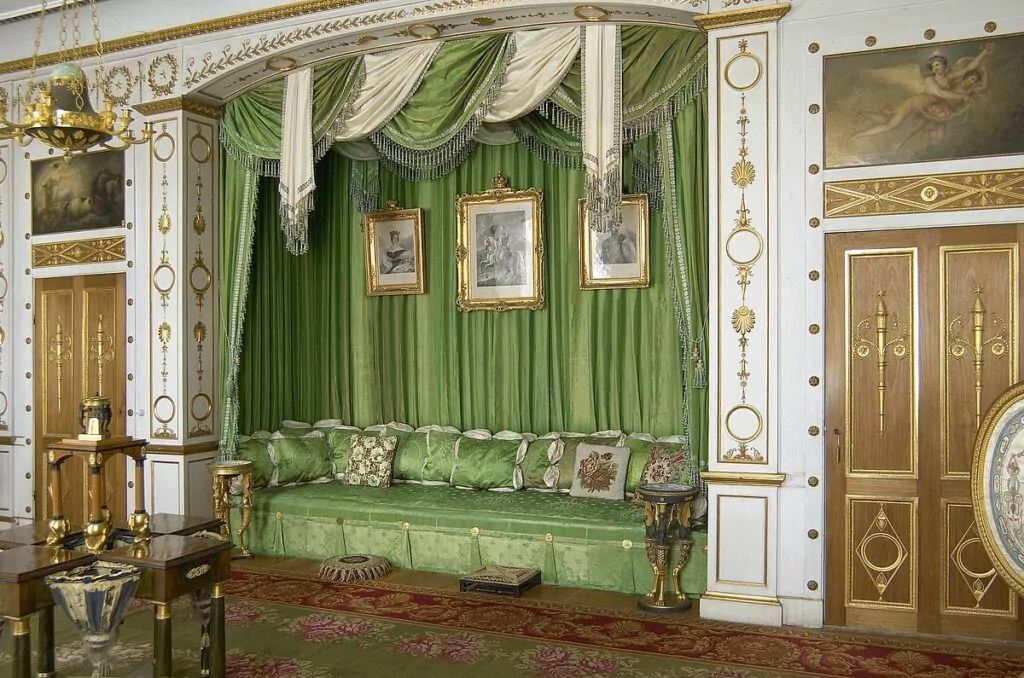
The castle park at Rosersberg Castle
The castle park at Rosersberg Castle is fantastically beautiful and very large. Close to the castle there is an area with lawns and planted trees.
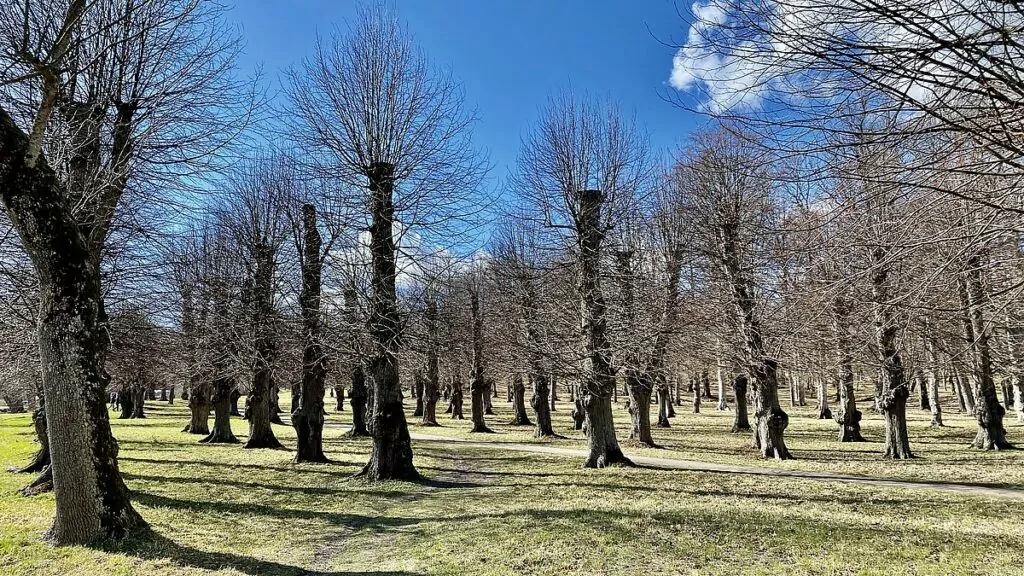
You can then walk further out into the large English park, which is more like a forest. There are very beautiful trees (what are those tall, bare, silvery trees called?) and a nice walk along the waterfront.
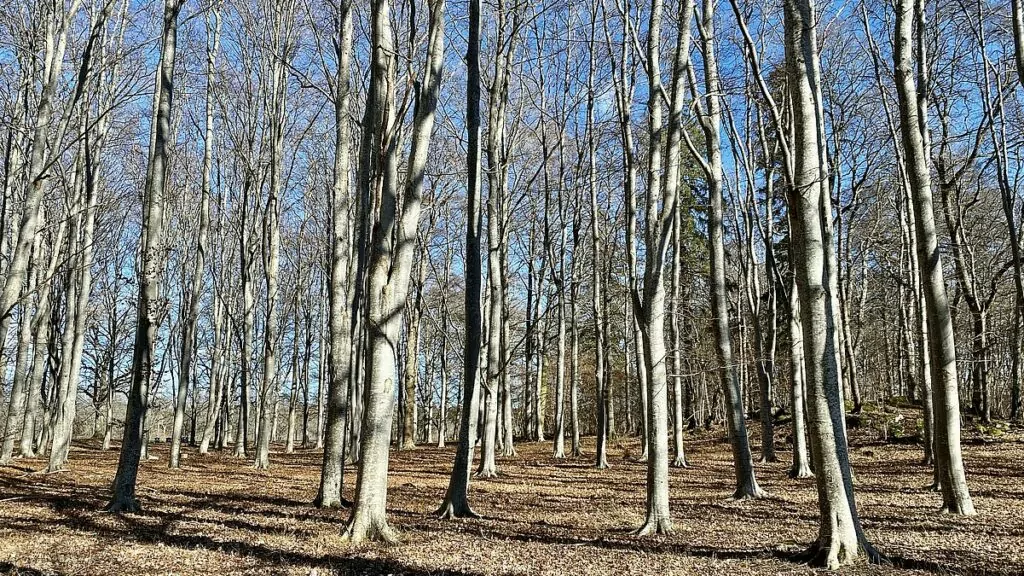
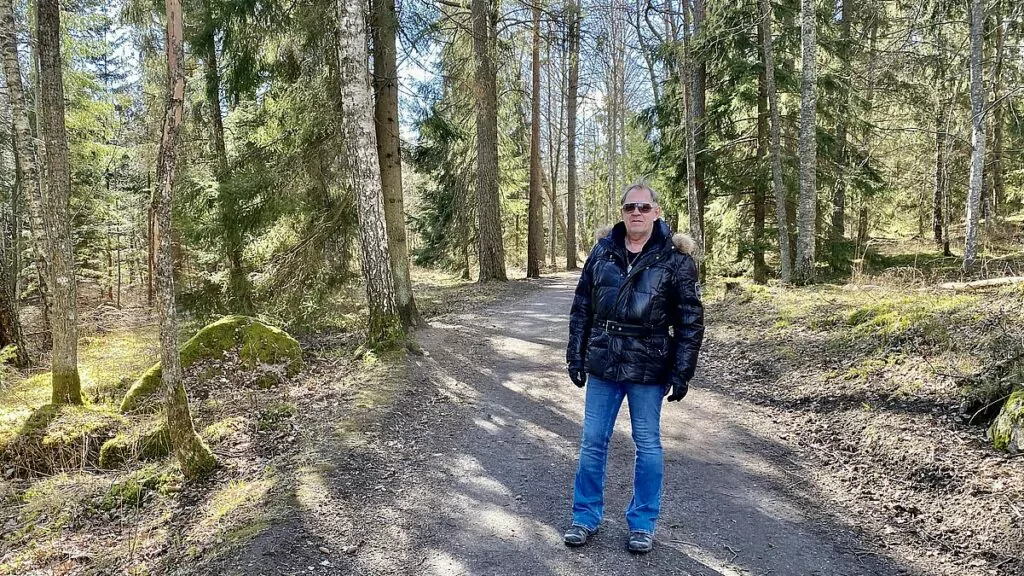
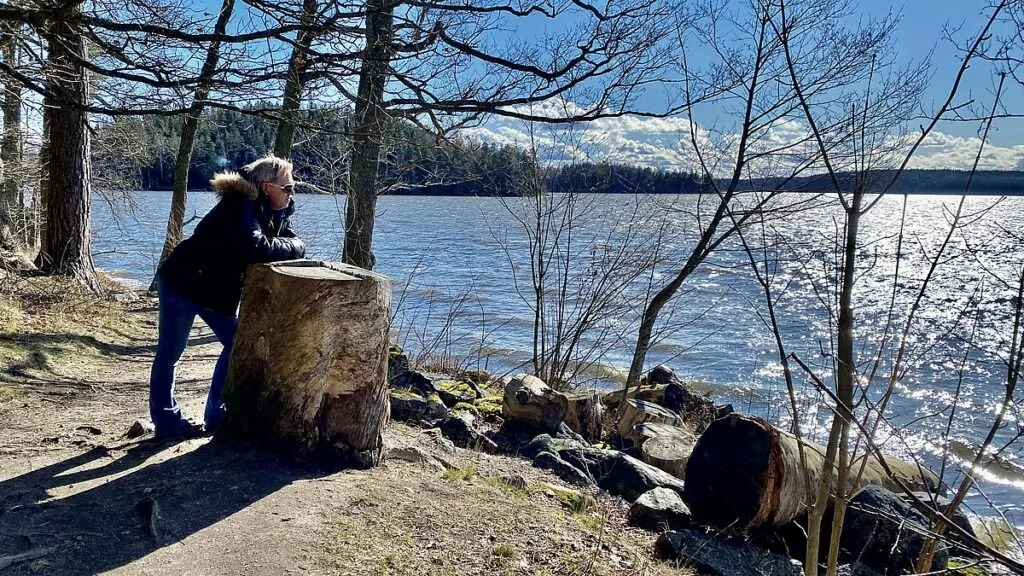
One of the places to look out for during the walk is 'Kettil's Cave'. It may sound more impressive than it is, but the area here is made up of very large boulders.
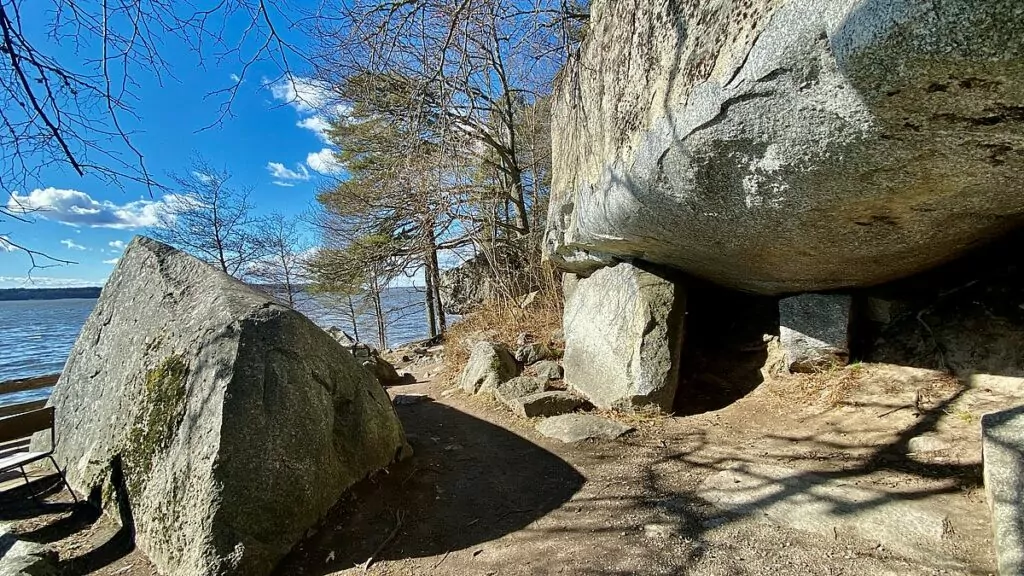
Right next to the cave is a (fake, modern) rune stone, which is supposed to be a reminder of Kettil.
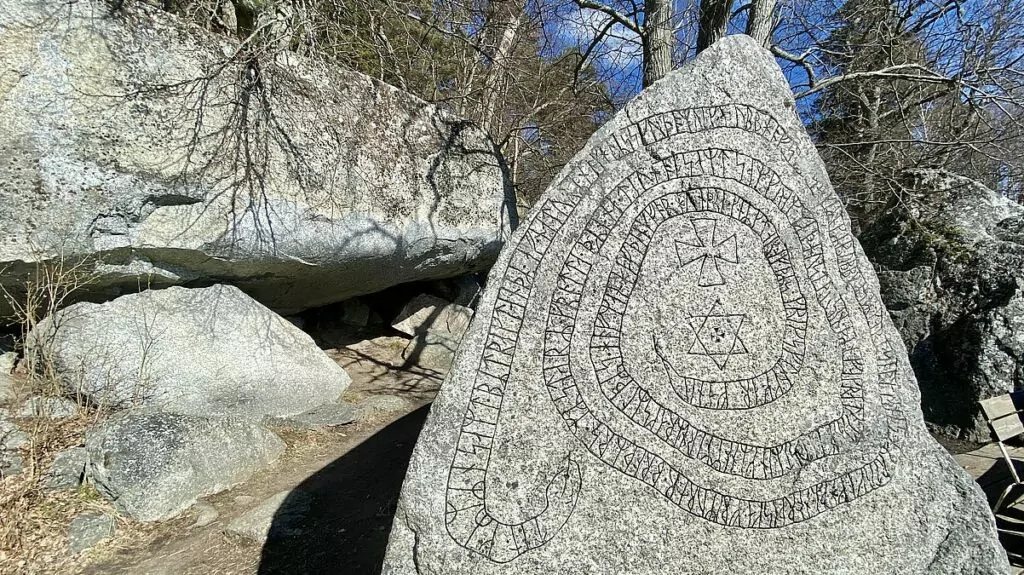
If you climb up from Kettil's cave (or enter from the road from the other direction), you will reach the "viewpoint". And yes, here you can enjoy a really nice view!
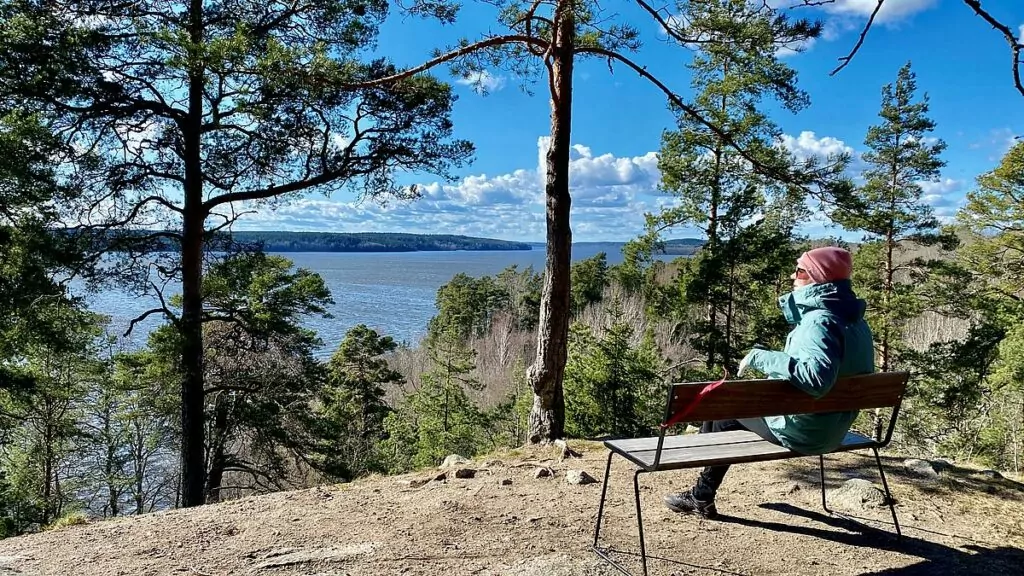
The next two photos are from the walk back towards Rosersberg Castle. First we saw a very big and old tree that needed a hug.
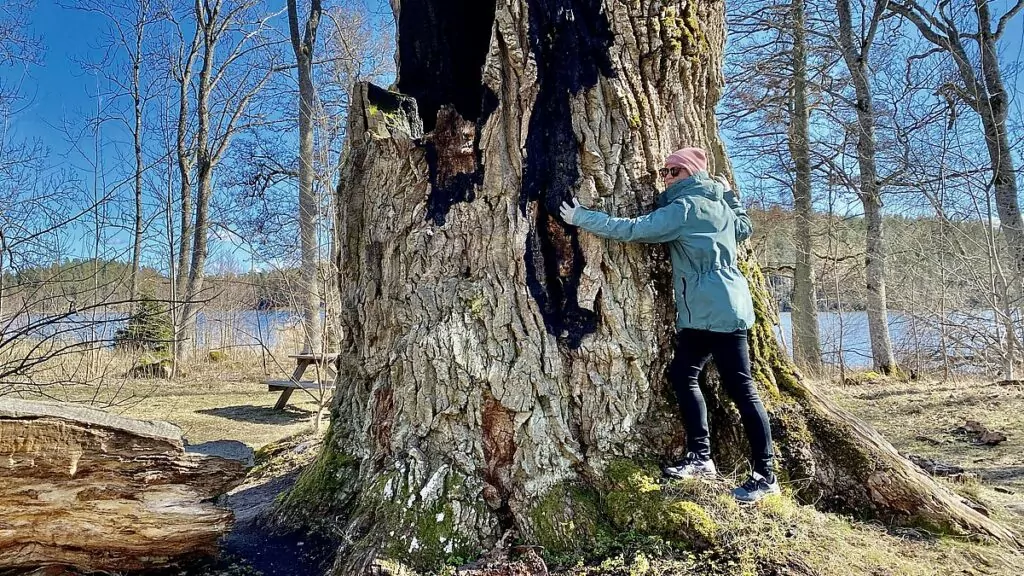
Then we saw an even older tree, which did not survive with just hugs, but also needed supports.
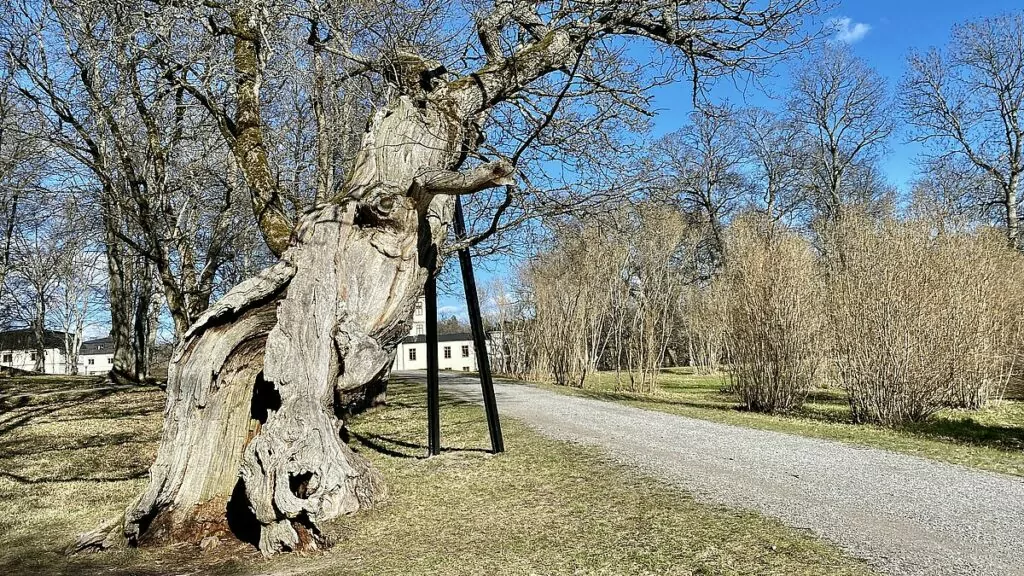
Romanesque eastern tower churches: Norrsunda and Skånela.
If you drive a little way from Rosersberg, you can check out the Romanesque eastern tower churches in Norrsunda and Skånela. An eastern tower church is a church building with the church tower placed in the east. This is the oldest type of country church in Uppland, and the oldest of these is the one in Skånela. We have photographed the one in Norrsunda, which we thought was the most beautiful.
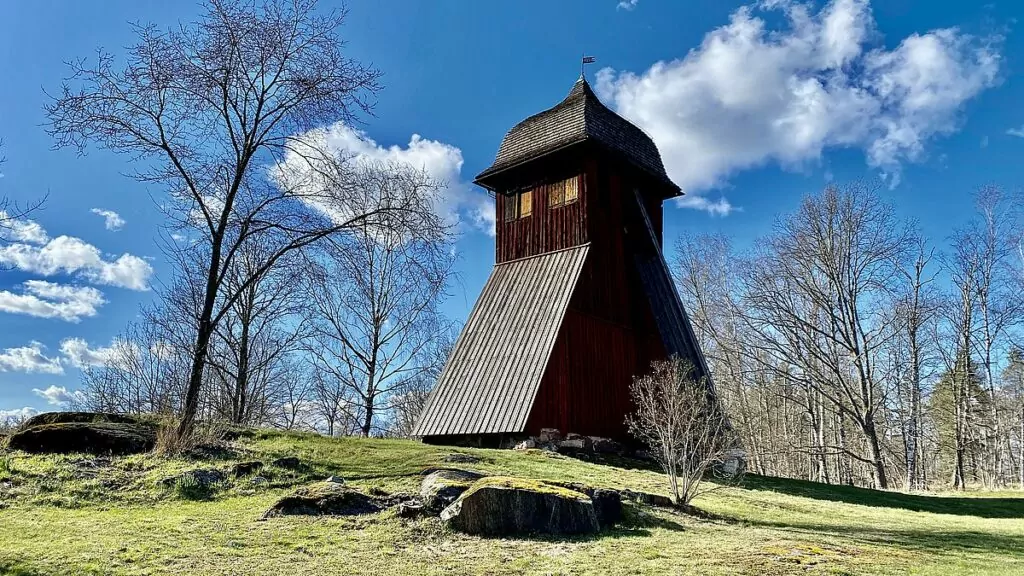
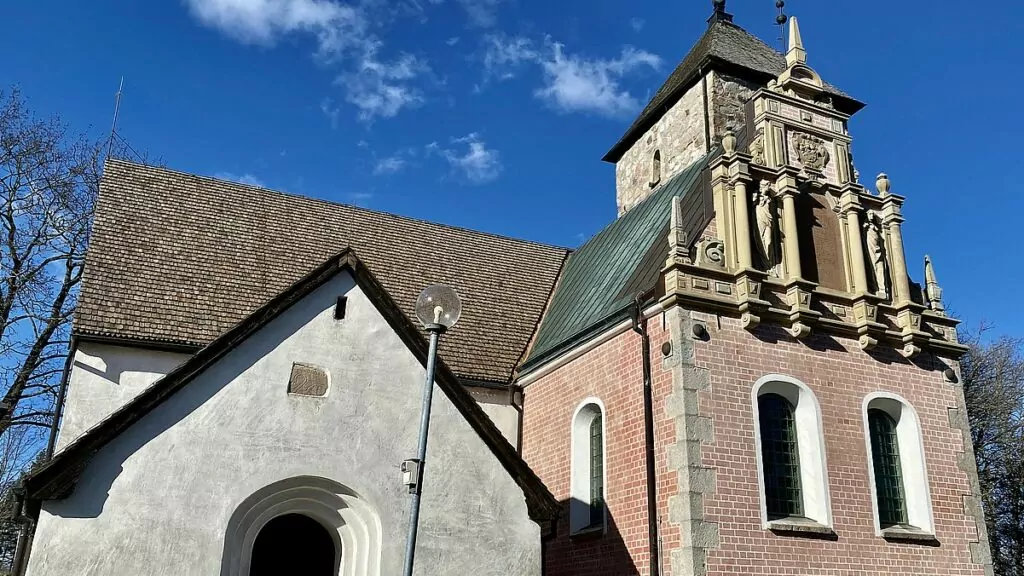
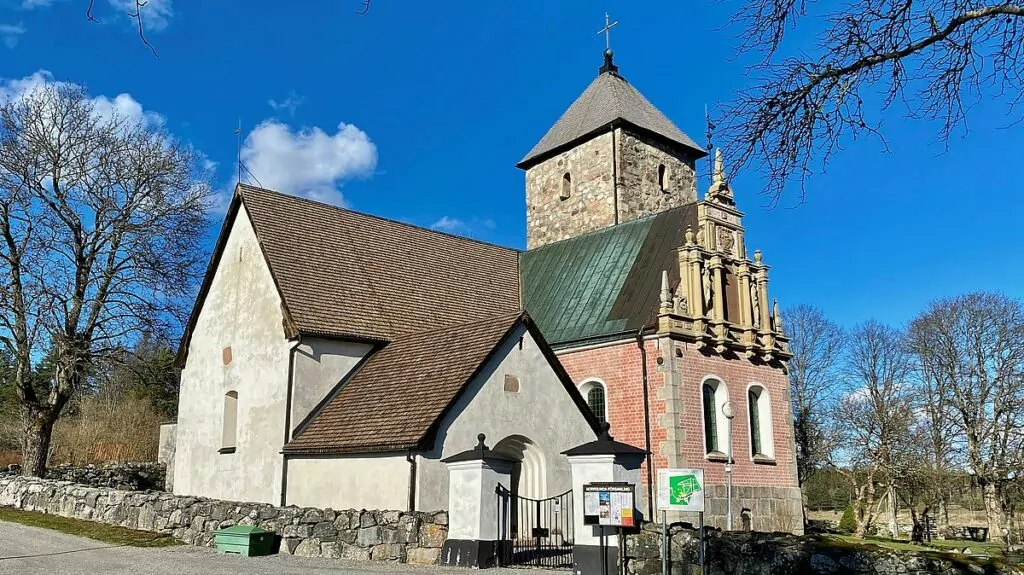
Skånelaholm Castle in Sigtuna
Just 20 minutes from Rosersberg Castle is Skånelaholm Castle. The castle dates back to the 13th century, but the castle you see today was built in 1639-1643 by the court president Andreas Gyldenklou.
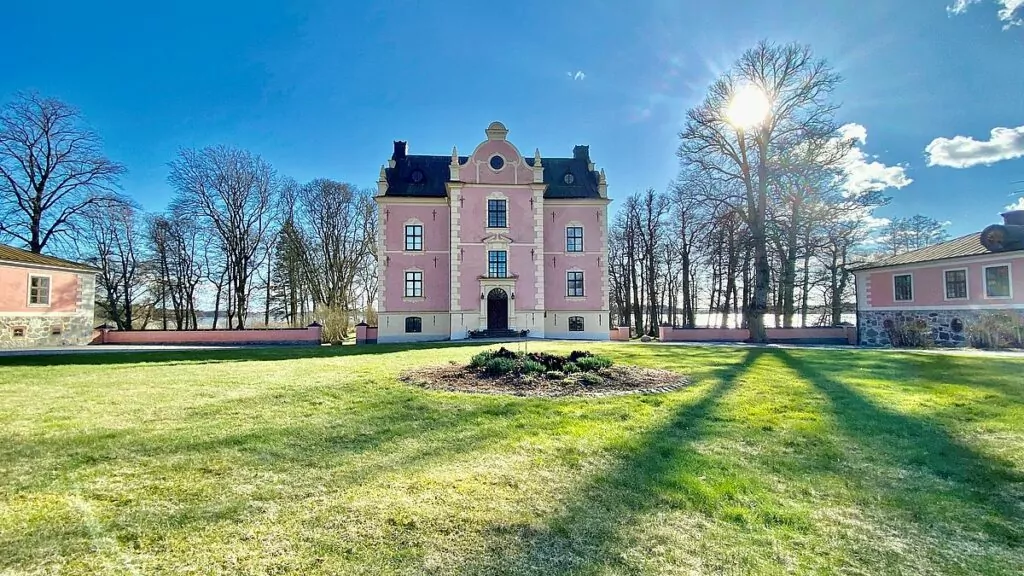
The longest period with the same owner was between 1742 and 1918, when the castle was owned by the Jennings family. In 1929 the castle was bought by the historian Retting, who became the last private owner. The Retting couple donated the castle to the Royal Academy of Sciences in 1962, along with furniture, art, books and artefacts they had collected.
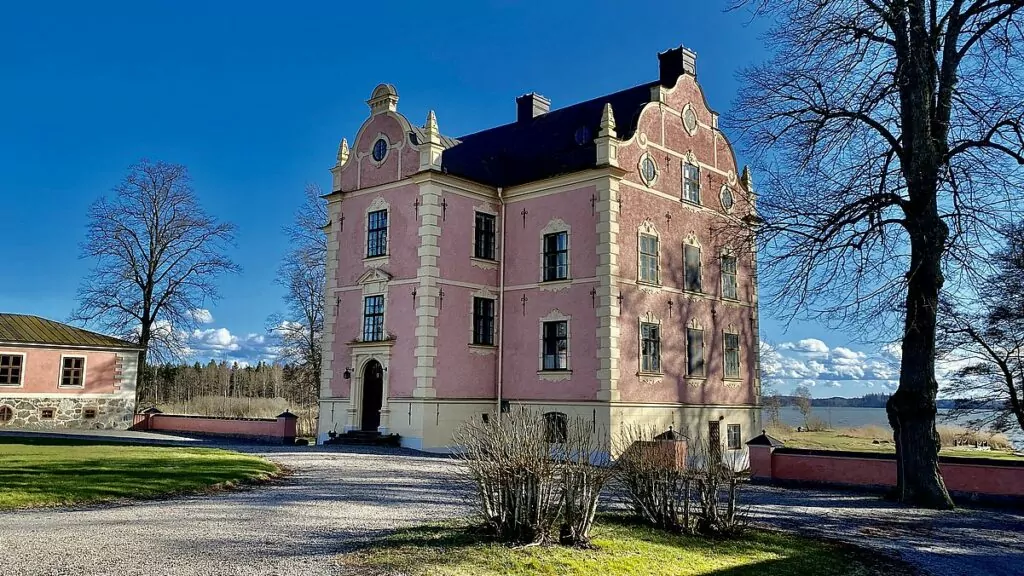
The castle is now open to the public during the summers. Since we were here in April and during corona time, it was of course closed, but it was still nice to see the nice little castle.
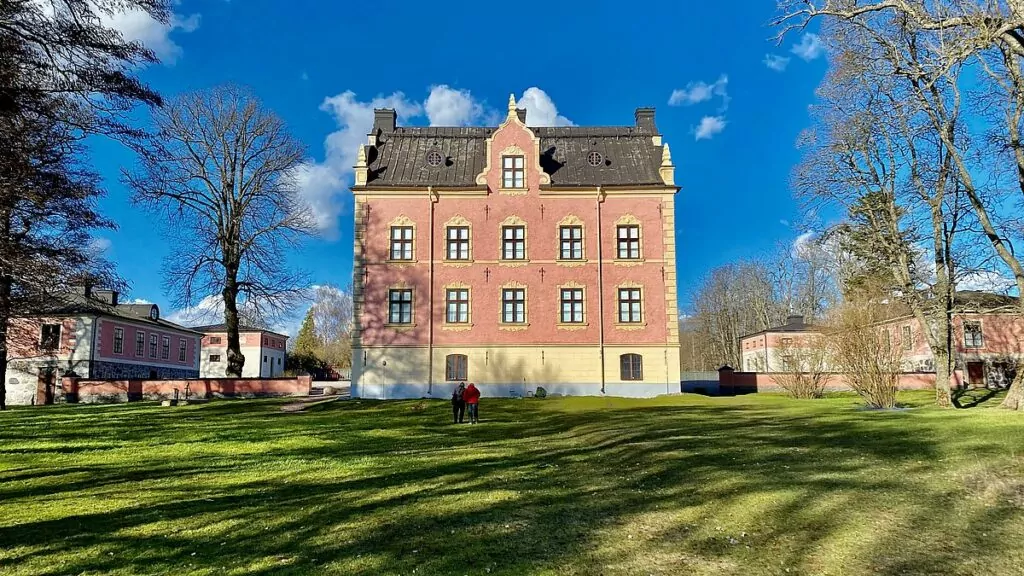
The castle and its wings have changed over the years, but today it has the same colour scheme as it had at the end of the 19th century. Very charming, and with a great location by the water!
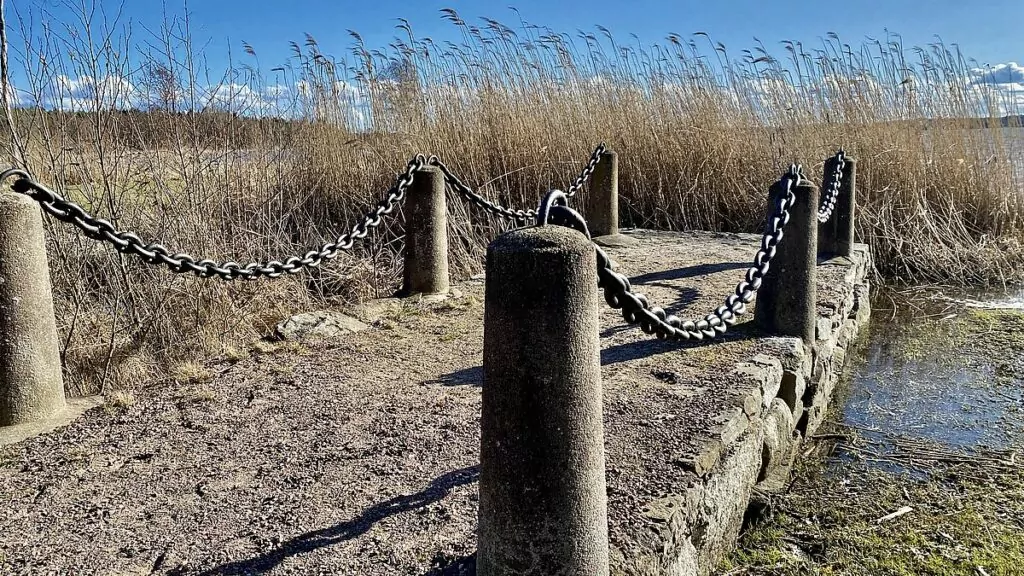
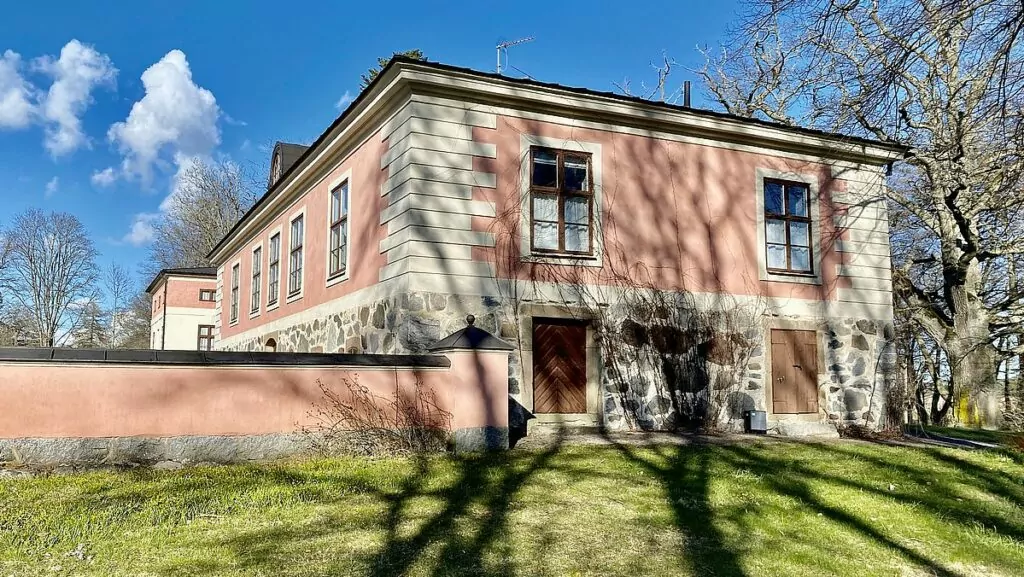
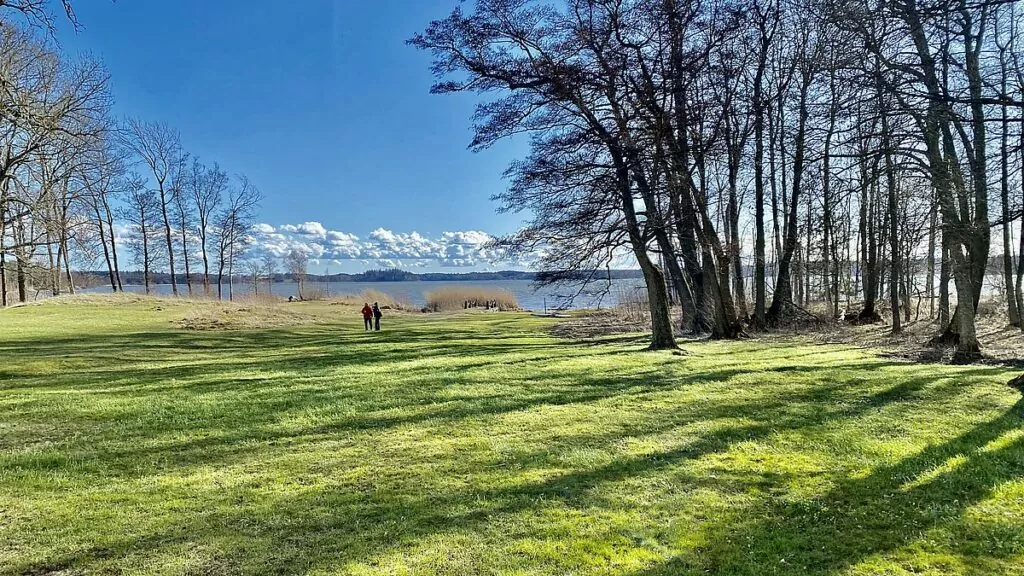
RV park at Steningebadet
Apps CamperContact suggested that you could stay for the night in the car park at Rosersberg Castle, but we felt done with the castle. Instead we chose to go to Steningebadet, where there are three pitches for motorhomes, and where you can stay for 12 hours. The site is free of charge and there is rubbish collection, but no other services.
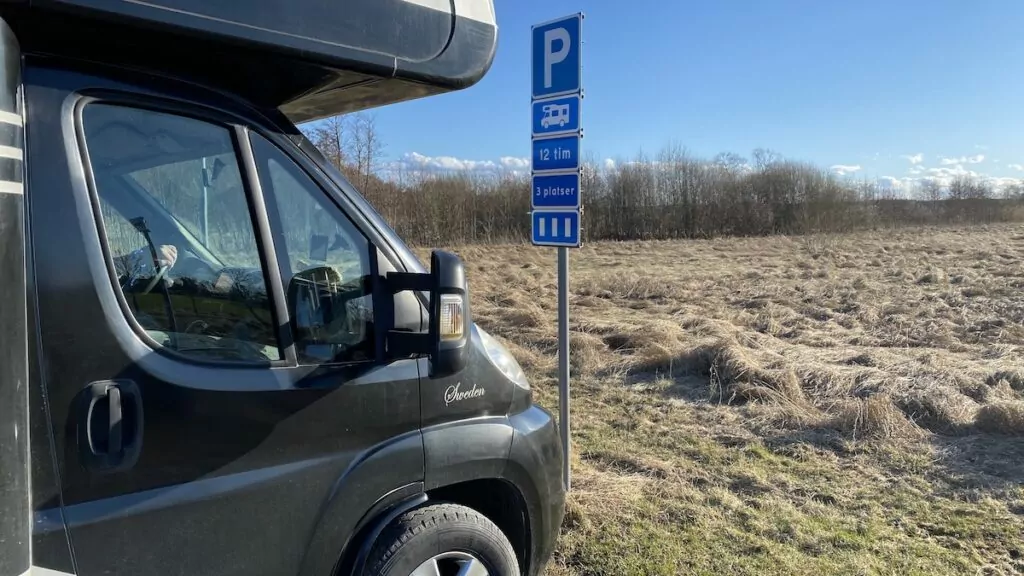
Right next door is a nature reserve and we saw many hikers coming and going. In the evening, however, the atmosphere was different, with cars coming and going in the dark. We stood here as a single motorhome and actually did not feel completely safe.
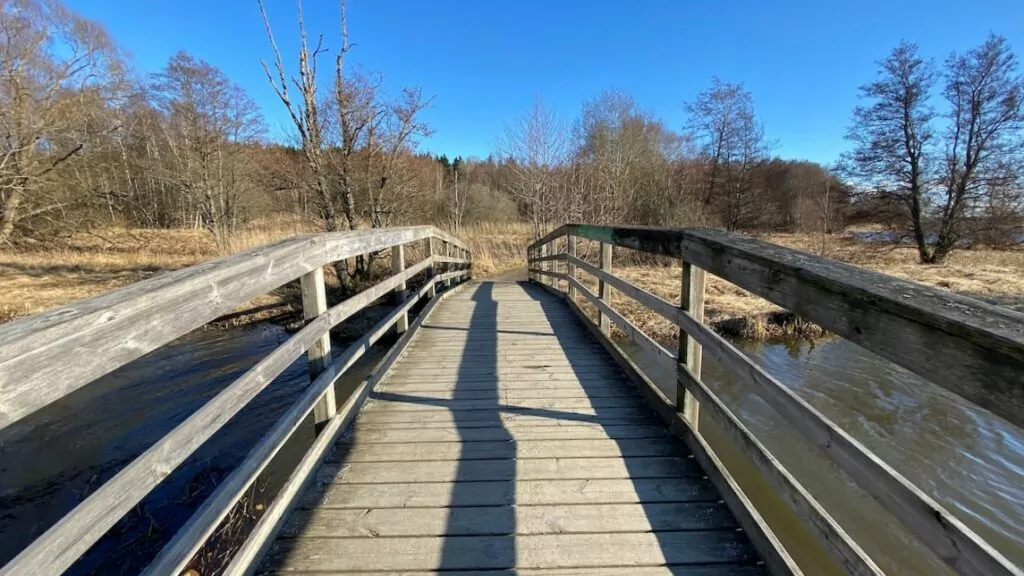
Steninge Castle in Sigtuna
We woke up early and headed straight to the airport. Steninge Castle, which is right next to Steninge Bath and the car park. The castle is really beautiful, but the park would not open until 12 o'clock. We didn't have the energy to wait that long, so we moved on. The photo of the castle will be from a distance, from outside the gate ... There were new adventures instead!
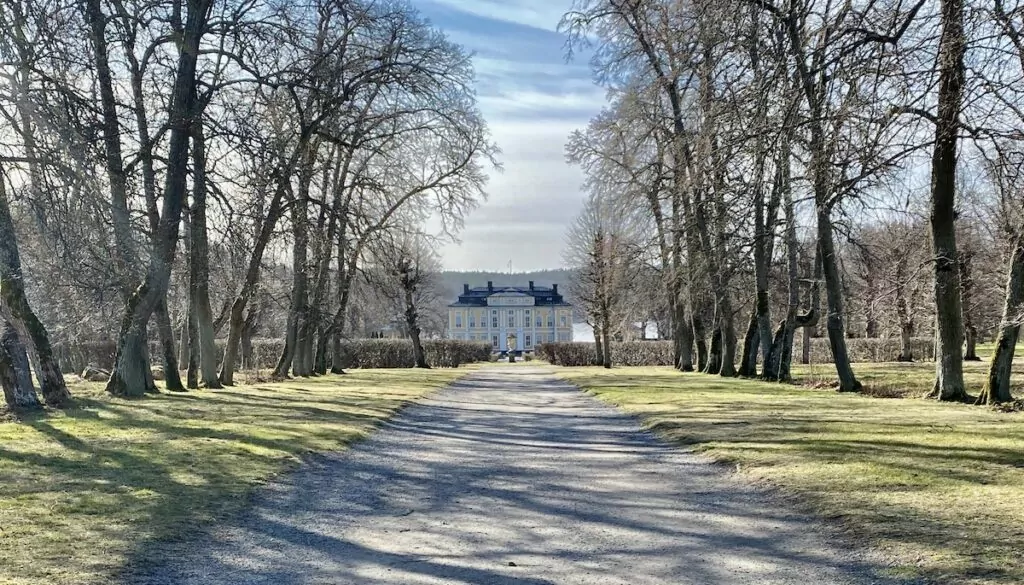
See more in the neighbourhood
In Sigtuna there is another fine castle to visit, namely Wenngarn Castle. In addition, Sigtuna itself is a pleasant town, with cosy alleys, cafés and old church ruins.
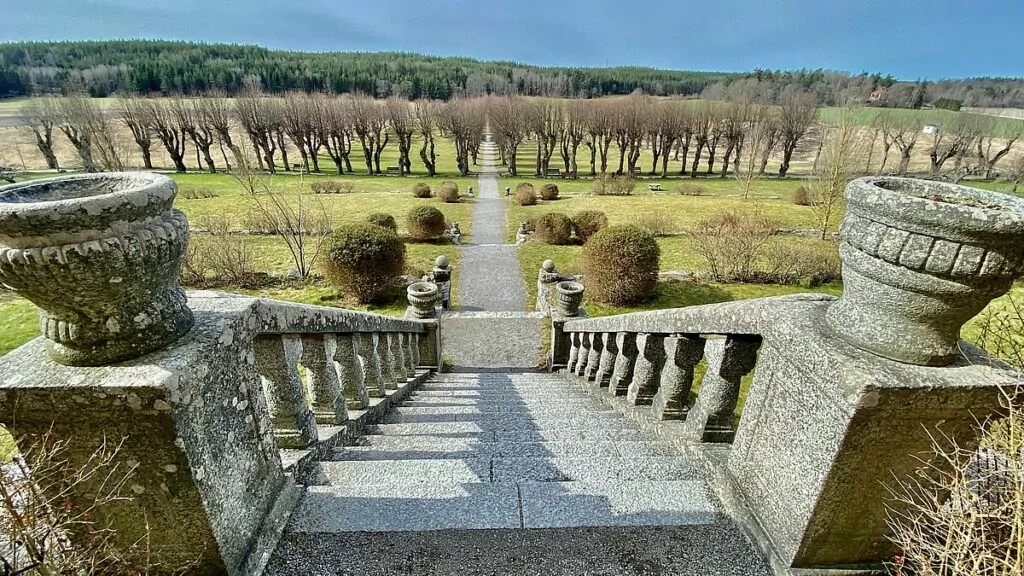
Have you visited Rosersberg Castle?
Have you visited Rosersberg Castle, or any of the other castles in the area? Perhaps you have even more tips?
30 different things to do in Stockholm
Looking for different things to do in Stockholm? Then you've come to the right place! Here...
Görväln Castle and Görväln Nature Reserve
Görväln Castle and Görväln Nature Reserve are located in Järfälla municipality, north-west of Stockholm. We made a...
Drottningholm Palace in Stockholm - guide for your visit
Last weekend we visited Drottningholm Palace in Stockholm. It was a fantastic autumn weekend, and...
Väddö sea baths and camping in Roslagen
Väddö havsbad och camping på Väddö is a campsite with a sandy beach, surrounded by beautiful nature....
Wenngarn Castle in Sigtuna - castle park, café and history
Wenngarn Castle in Sigtuna is a beautiful castle, which was once built by Magnus the...
Gustavsberg in Värmdö - in the footsteps of the porcelain factory
Gustavsberg is a nice little town in the municipality of Värmdö in Stockholm, which is mainly...
What to do in Sundbyberg - 9 tips for cosy Sumpan.
What can you do in Sundbyberg? We have lived in Sumpan for many years, and...
Pampas marina in Solna - all you need to know
Pampas marina in Solna is a marina, where you will also find houseboats and a restaurant....
The Swedish Upplands Road - FREEDOMtravel Themed Roads
Writer: Peter Bergström The Swedish Upplandsvägen is a themed road that takes you from Stockholm through...
Riddarhuset in Stockholm - interesting to visit
The Riddarhuset in Stockholm is open to visitors for an hour every weekday, and making a...
Lövstabruk - ironworks dating back to the 16th century
Lövstabruk in Uppland is one of the so-called vallon mills in Sweden, a historic ironworks....
Lötsjön and Råstasjön - nature in Solna and Sundbyberg
Lötsjön and Råstasjön, located in Sundbyberg and Solna respectively, are two beautiful lakes with...
Pythagoras Industrial Museum in Norrtälje - step into history
The Pythagoras Industrial Museum in Norrtälje tells, in a very vivid way, about a piece of Swedish industrial history....
Royal palaces in Sweden - 11 magnificent castles
Royal palaces in Sweden are the subject of today's article. Did you know that there are 11...
Filmstaden Råsunda in Solna - 100 years of film history
Filmstaden Råsunda is currently operating as a cinema, although it is currently closed due to...
Kapellskär campsite in the Riddersholm nature reserve
Kapellskär's camping is beautifully located in the Riddersholm nature reserve, with the coast and the Åland Sea right outside. We...
Ängskärs sea campsite in Uppland - and three caravan sites
Ängskärs havscamping is beautifully situated on the Hållnäs peninsula in north-eastern Uppland. We camped here for one day and...
Kungsträdgården in Stockholm - and the Makalös Palace
Kungsträdgården in Stockholm is a beautiful park where people stroll, have coffee, listen to concerts and...
What to do in Solna - 15 activities and experiences
What can you do in Solna? We have lived in Solna for eight years, and before...
Siggesta Gård in Värmdö - now with parking spaces
Siggesta Farm in Värmdö, outside Stockholm, is a rural hotel with conference facilities, outdoor activities, animals,...
Hagaparken in Solna - castles, gazebos and pavilions
Hagaparken in Solna is a beautiful park where you can stroll among castles, gazebos and...
Törnskogen nature reserve - lost twice in one day
Törnskogen Nature Reserve consists of Södra Törnskogen in Sollentuna and Norra Törnskogen in Upplands Väsby. Here...
Ulriksdal Palace and Park - Royal Palace in Solna, Sweden
Ulriksdal Palace is one of the eleven royal palaces in Sweden, and offers a...
Sigtuna - Visiting the oldest town in Sweden
Join us in Sigtuna, Sweden's oldest town! Yesterday we woke up to blue skies and decided to...
Butterfly House in Haga - tropical climate, butterflies and sharks
Have you visited the Butterfly House in Haga? For us it was a long time ago, but now...
Vikingabyn Storholmen - open-air museum in Roslagen.
Vikingabyn Storholmen is an open-air museum beautifully situated by Lake Erken in Roslagen. For a few...
Gräsö in Roslagen - a scenic gem
Gräsö is a scenic island, located just outside Öregrund in Roslagen. The island is surrounded by...
Visiting the Royal Palace of Stockholm - photos and tips
What is it like to visit the Royal Palace in Stockholm? If there is any attraction in the...
Solna church - and the beautiful Norra begravningsplatsen cemetery
Solna Church is a nice little round church from the 12th century. Adjacent to the church is Norra begravningsplatsen, which...
Rydboholm Castle in Roslagen - and the English Park
Rydboholm Castle in Roslagen is a private castle from the 16th century, and next to the castle is the...
Öregrund in Roslagen - tips for things to see and do
Öregrund is a real gem in Roslagen with charming alleys, beautiful old wooden houses and a...
Salsta Castle in Uppland - castle café, guided tours and ghosts
Salsta Castle is a beautiful baroque castle from the 17th century. We were fascinated by the beautiful building when...
Skokloster camping - great waterfront on the Skohalvön peninsula
Skokloster camping (or Sånka camping as it seems to be called on the signs here) is located on Skohalvön...
Steninge castle in Uppland - Aunt Anna and the sugar bushes
Guest writer: Anna Nilsson Spets A visit to Sweden for me is full of activities, we headed for...
Skokloster Castle - magnificent baroque castle by Lake Mälaren.
Skokloster Castle is a magnificent baroque castle on Lake Mälaren. This is the largest private palace that...
Bredsands camping in Enköping
Finally, we have a completely free weekend and the opportunity to go out with the motorhome ....
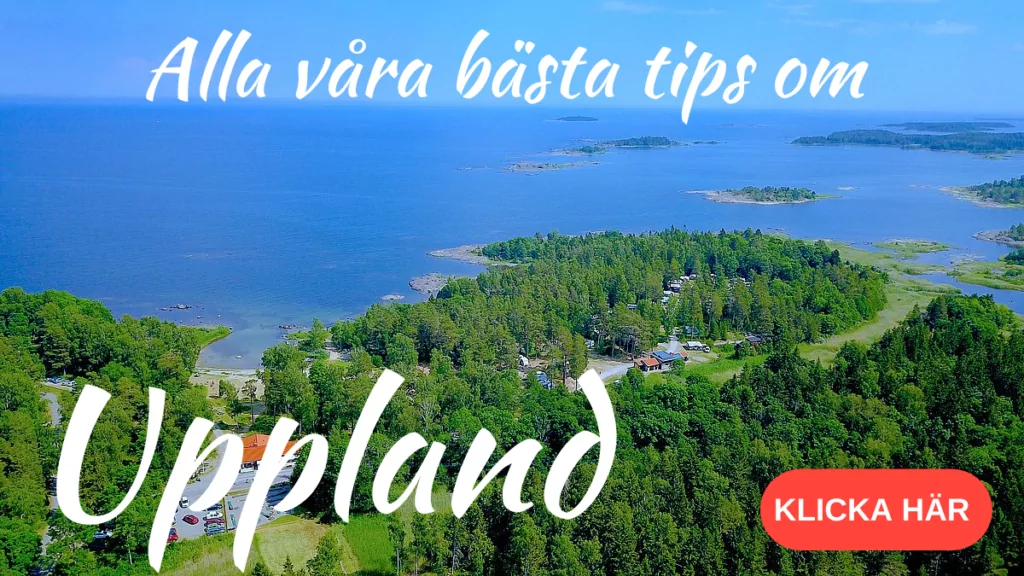
Facts about Roserbserg Castle
- Country: Sweden
- Landscape: Uppland
- County: Stockholm
- Municipality: Sigtuna
- Style: Nyantik, empirical
- Established: 1634
- Owners: State Property Agency
- The name: Rosersberg is named after the mother of the estate's founder, the national treasurer Gabriel Bengtsson Oxenstierna. His mother came from the Tre Rosor family.
- Read more: You can find more information at The Royal Palace website
History at Rosersberg Castle
- 1634: Construction of the castle began by the Oxenstierna family, and it was completed four years later.
- 17th century: In the second half of the 17th century, the castle was modernised in the Baroque style by the son of the National Treasurer, Bengt Oxenstierna. Oxenstierna was assisted by Nicodemus Tessin the younger.
- 1695: The church wing with Rosersberg Castle Chapel was completed.
18th century
- 1747: Rosersberg was bought by Baron Erland Broman, who had the castle modernised.
- 1757: After Boman's death, the estate was redeemed by the Swedish state. The estate became available to Duke Karl (XIII) of Södermanland, and thus became a royal palace. Duke Karl undertook both remodelling and renovation.
- 1792: When Gustav III died, Duke Charles took over as guardian regent.
- 1797: The palace was decorated in late Gustavian and Empire style, under the direction of Gustaf af Sillén.
19th century
- 1810: Charles XIV Johan Bernadotte became Crown Prince of Sweden and was adopted by Charles XIII and Hedvig Elisabet Charlotta.
- 1818: Charles XIII and Hedvig Elisabet Charlotta died, and Charles XIV Johan inherited the disposition of Rosersberg Castle. He used the castle extensively, especially in the summers with his wife Desideria.
- 1844: After the king's death, Queen Dowager Desideria used Rosersberg as her widow's residence.
- 1874: The infantry school moved into the ground floor and wings of the castle.
20th century to present
- 1961: The infantry school was relocated.
- 2004: An extensive facade renovation was initiated.
- 2008: Rosersberg Hotel and Conference opened.
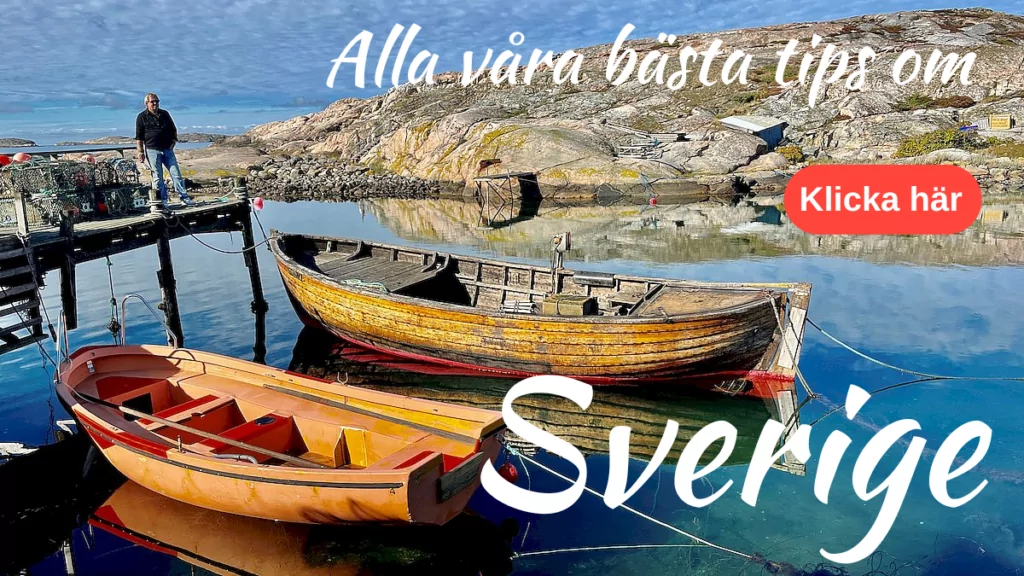


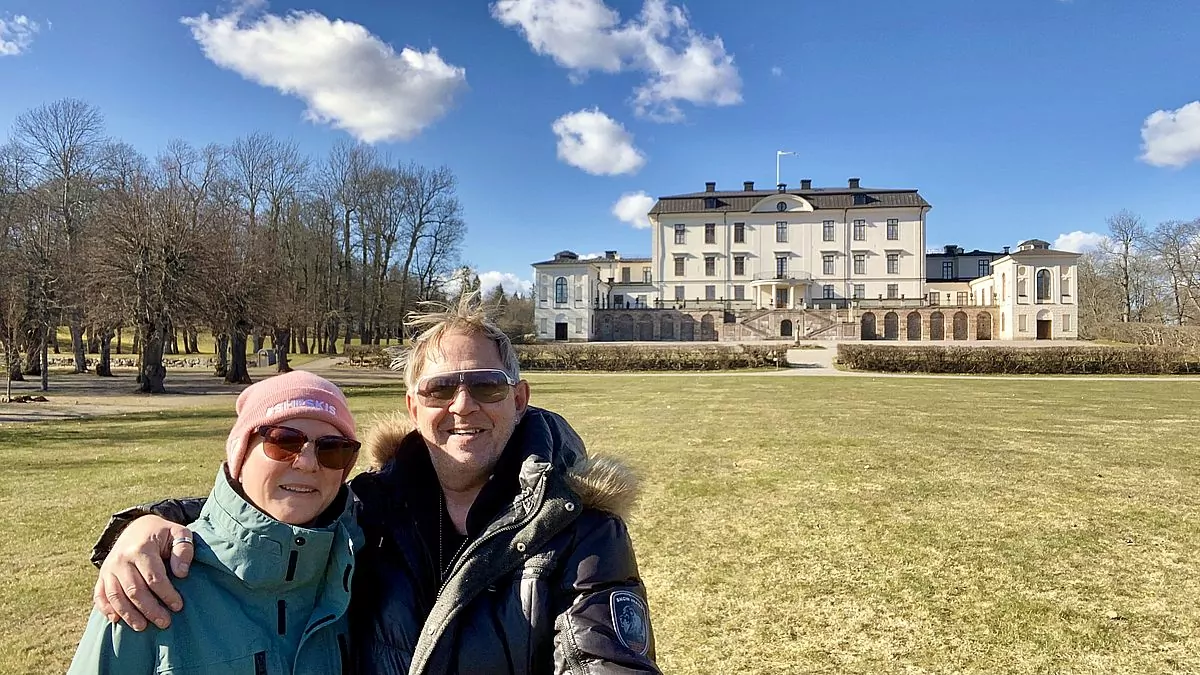






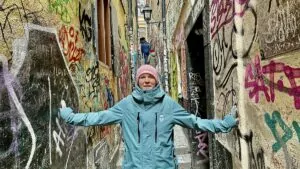
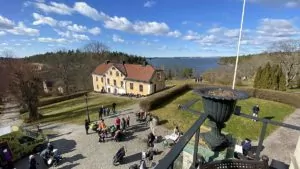
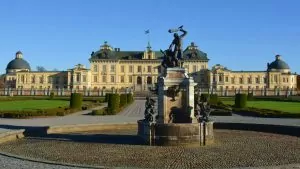
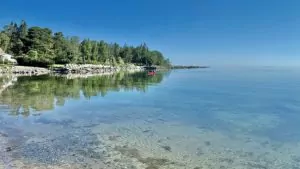
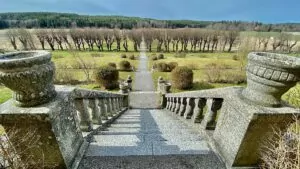
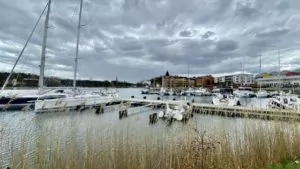
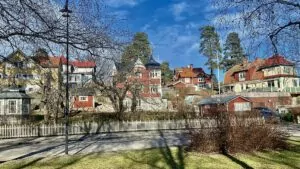
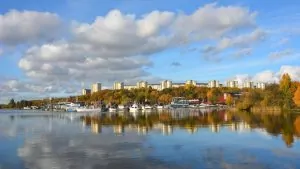
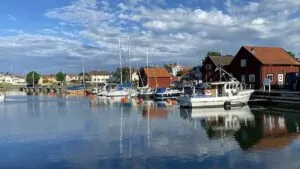
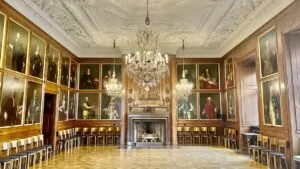
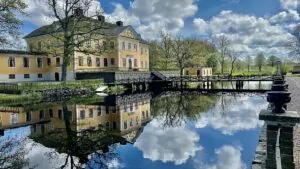
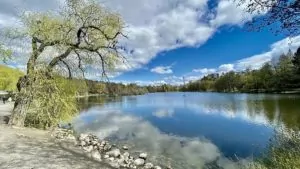
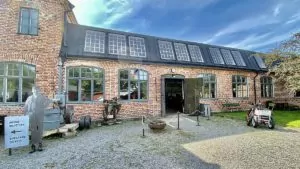
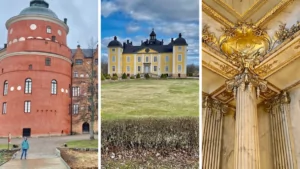
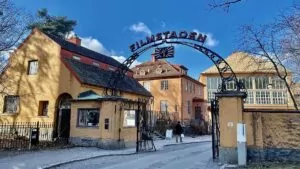
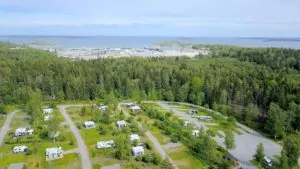
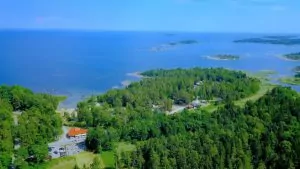
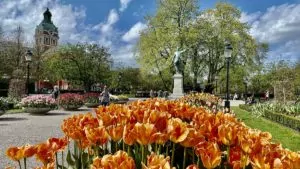
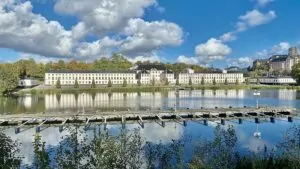
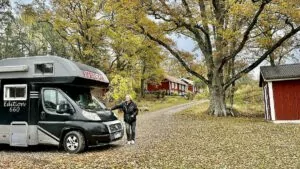
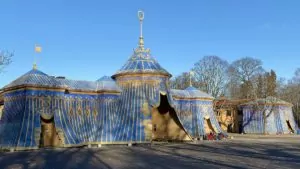
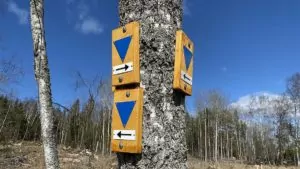
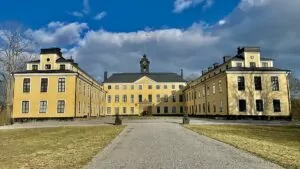
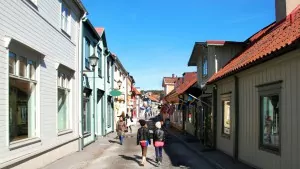
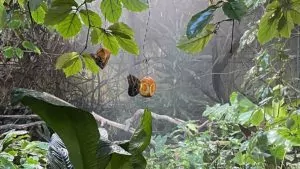
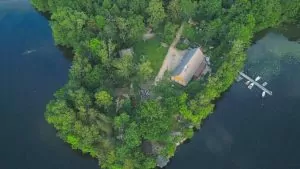

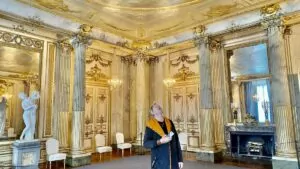
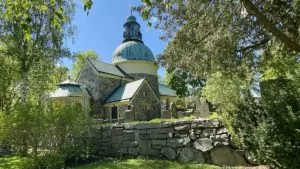
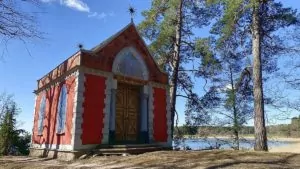
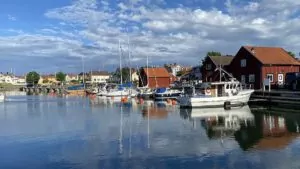
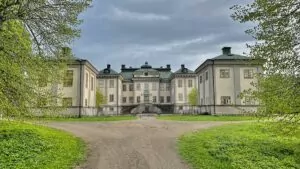
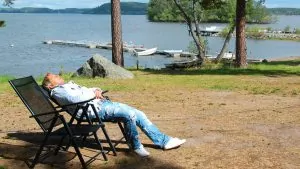
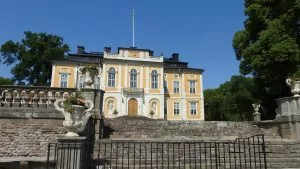
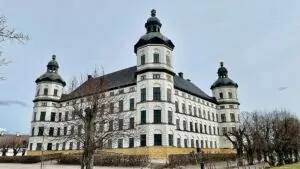
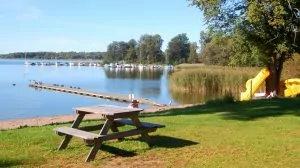
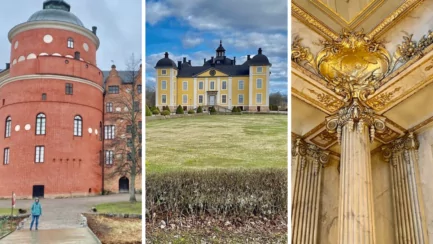
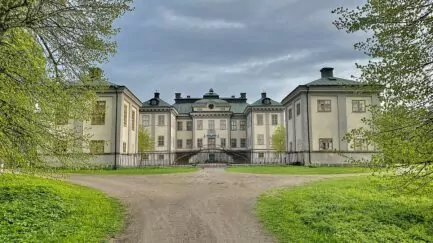
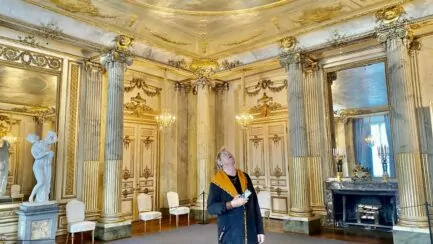



Ditte says:
Fun with a trip here. And you got to see a lot even if you couldn't get in for a tour.
For me these are well known areas. We lived in Upplands Väsby for many years and the trips here were many. Both to Rosersberg, the park, Steninge Castle and the park there and the whole area... Even the churches and Skånelaholm are old acquaintances.
Have been to a party at Steninge castle a few times and have friends who live nearby. Steningebadet, but not the campsite, are also well-known areas.
We have stayed at Rosersberg Castle a couple of times and it was really nice.
Wishing you a continued nice trip. I'm sure you found many nice places to visit.
12 April 2021 - 13:06
Helena says:
Glad you have been here so much! Very nice! Steninge castle also looked nice, although we did not see much of it.
12 April 2021 - 17:59
Monica says:
Yes the Scots have had some cultural trips as a goal: -), now I'm looking for Skokloster, I think you've written about it, will look, was a castle I visited as a child and later with my own family and then on a cultural trip with the whole gang in the housing association: -). I like that castle so much, both indoors and out and hope it can be like before again for such a nice castle café they have and lots of courses for school students of all ages and so much history for all of us. A nice week is wished to you🦢🐟🚌🌅.
12 April 2021 - 14:59
Helena says:
We have been to Skokloster on a few occasions, separately. Among other things, I (Helena) was there at an event once, with a market and tower games and such. Now we have visited the castle again together, so maybe there will be a report 😉 Wish you a nice week too!
12 April 2021 - 18:01
BP says:
Where you are standing in the header picture with the castle in the background, there were all kinds of sports and vintage cars - the Automobile Sportscar Show between 1998 and 2011. We went there on the last Sunday in August during all these years. Up on the gravel field directly in front of the castle were the Corvette cars. I can say that it was a very cool sight. http://christer.tarning.se/bil/show.Rosersberg.html
12 April 2021 - 19:14
Helena says:
What fun to see the pictures! How cool that they organised such an event at the castle!
13 April 2021 - 8:34
Lena+in+Wales+and+Spain says:
Another nice post about castles, thank you.
I recently read about Rosersberg Castle somewhere, so I knew about it.
So interesting with your castle reports!
13 April 2021 - 14:36
Helena says:
I'm glad you like the reports! Maybe you read from From city to beach? She also wrote about Rosersberg just recently.
13 April 2021 - 17:08
Lena+in+Wales+and+Spain says:
Right, that's what I read about the castle.
14 April 2021 - 9:32
Lisa says:
Exciting report - we live in Sigtuna and think you have captured most things here in the neighbourhood. Love Rosersberg Castle and especially walking in the park and along the water.
13 April 2021 - 22:36
Helena says:
What fun that you, who live in Sigtuna, like the report! Nice area and beautiful castles!!!
14 April 2021 - 8:04
Emma, sun like sun? says:
At Rosersberg Castle the son learned to ride a bike and at Skånela Castle we walked a lot because we lived a few hundred metres away along the road. So those are my home areas before we moved to Spain.
13 April 2021 - 22:42
Lena - good for the soul says:
That didn't sound very good about the car park. Good thing nothing happened!
I have been to Steninge Castle. Not inside the castle itself, but had a Mother's Day brunch next door. Really nice food. Recommended.
Hug Lena
22 April 2021 - 12:58